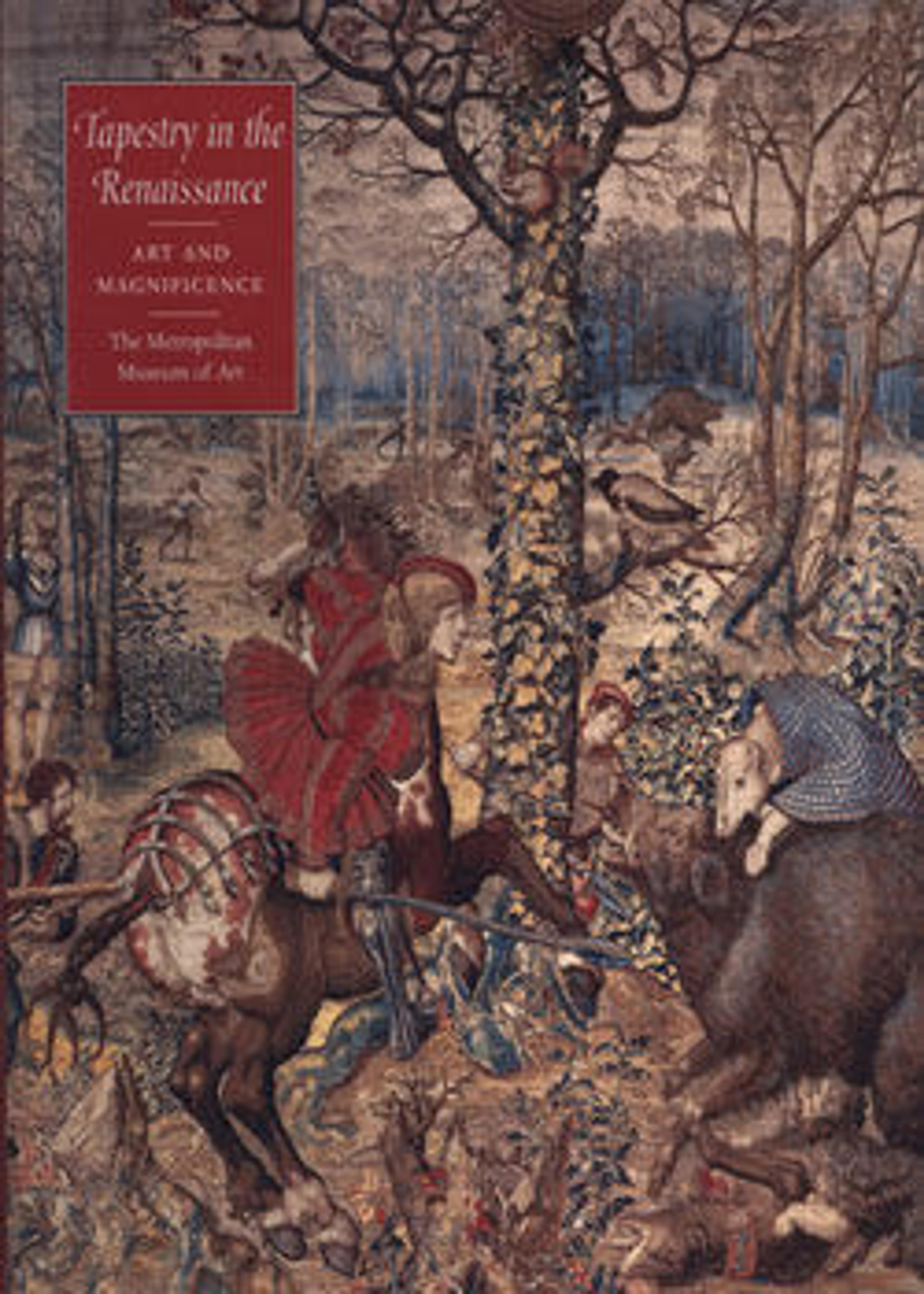Minerva from the "Doria Grotesques"
Minerva, Roman goddess of art and science, stands as if on a stage in the center foreground of this composition, surrounded above and to the sides by curling plant tendrils, gamboling animals and putti, and elegant swags of drapery. In the cartouche above, Minerva receives offerings of a book and vessel.
This is one of two surviving tapestries of Minerva from the thrice-woven series of tapestries called the Doria Grotesques. Perino del Vaga designed the eight-piece sequence in about 1545 for the naval commander Andrea Doria to add to the substantial tapestry collection in his glorious palazzo in Fassolo, then just outside the port city of Genoa. The Grotesques, each featuring a different deity, showcased Perino's dexterity in this decorative field, combining respect for antique prototypes with Raphael-inspired Renaissance grace. Though designed in Italy, the three sets of Grotesques tapestries, all made for Doria, were woven 500 miles away in the Southern Netherlands, almost certainly in Brussels, where the most celebrated weavers in the world worked. The Met also owns Neptune from this series (2011.14): the tapestries were apparently created in different workshops, their weaving styles being quite dissimilar. This Minerva might have been part of the set woven for Doria in the workshop of Joost van Herzeele, whose weaver’s mark remains visible on another, technically similar tapestry, Mars, which remains in Genoa.
This is one of two surviving tapestries of Minerva from the thrice-woven series of tapestries called the Doria Grotesques. Perino del Vaga designed the eight-piece sequence in about 1545 for the naval commander Andrea Doria to add to the substantial tapestry collection in his glorious palazzo in Fassolo, then just outside the port city of Genoa. The Grotesques, each featuring a different deity, showcased Perino's dexterity in this decorative field, combining respect for antique prototypes with Raphael-inspired Renaissance grace. Though designed in Italy, the three sets of Grotesques tapestries, all made for Doria, were woven 500 miles away in the Southern Netherlands, almost certainly in Brussels, where the most celebrated weavers in the world worked. The Met also owns Neptune from this series (2011.14): the tapestries were apparently created in different workshops, their weaving styles being quite dissimilar. This Minerva might have been part of the set woven for Doria in the workshop of Joost van Herzeele, whose weaver’s mark remains visible on another, technically similar tapestry, Mars, which remains in Genoa.
Artwork Details
- Title:Minerva from the "Doria Grotesques"
- Designer:Probably designed in the workshop of Perino del Vaga (Pietro Buonaccorsi) (Italian, Florence 1501–1547 Rome)
- Maker:Perhaps woven in the workshop of Joost van Herzeele (Flemish, active before 1580–89)
- Date:Designed 1545, woven ca. 1550
- Culture:Netherlandish, Brussels
- Medium:Wool, silk (17-19 warps per inch, 7-8 per cm.)
- Dimensions:12 ft. 6 in. × 13 ft. 3 in. (381 × 403.9 cm)
- Classification:Textiles-Tapestries
- Credit Line:Bequest of Annie C. Kane, 1926
- Object Number:26.260.59
- Curatorial Department: European Sculpture and Decorative Arts
More Artwork
Research Resources
The Met provides unparalleled resources for research and welcomes an international community of students and scholars. The Met's Open Access API is where creators and researchers can connect to the The Met collection. Open Access data and public domain images are available for unrestricted commercial and noncommercial use without permission or fee.
To request images under copyright and other restrictions, please use this Image Request form.
Feedback
We continue to research and examine historical and cultural context for objects in The Met collection. If you have comments or questions about this object record, please contact us using the form below. The Museum looks forward to receiving your comments.
